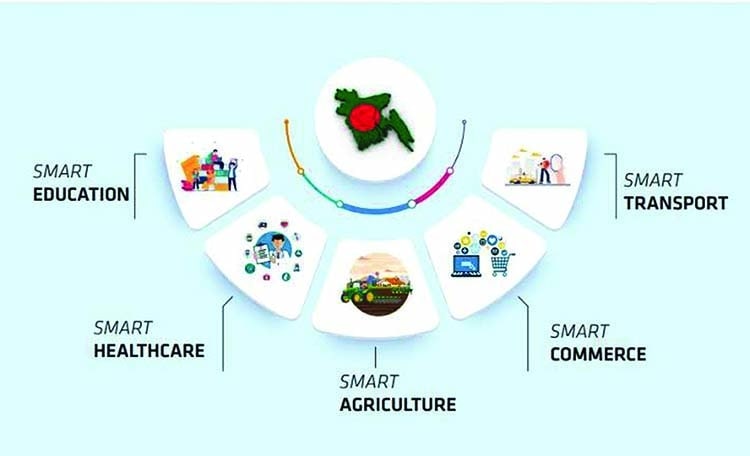Criminal behavior is a complex phenomenon that has intrigued scholars and professionals for centuries. Criminal conduct can take many forms, from minor offenses to violent crimes, and its causes are multifaceted, ranging from genetic and environmental factors to personal and social circumstances. Understanding the psychology of criminal conduct is essential for developing effective prevention and intervention strategies that can reduce the incidence and impact of crime. In this article, we will explore 10 key insights into the psychology of criminal conduct that can shed light on the motives, behaviors, and risk factors associated with criminal behavior.
Table of contents
- Criminal conduct is not a single entity
- Criminal behavior is shaped by multiple factors
- Criminal conduct is not always intentional
- Criminals have different personalities and traits
- Criminals often have a history of trauma and abuse
- Criminal behavior is influenced by social norms and peer pressure
- Substance abuse is a significant risk factor for criminal conduct
- Criminals often have distorted thinking patterns
- Criminal conduct can be learned and reinforced
- Effective interventions must address the underlying causes of criminal behavior
- Conclusion
- Bibliography
Criminal conduct is not a single entity
Criminal conduct refers to a broad range of behaviors that violate social norms and legal standards. It includes acts such as theft, fraud, assault, homicide, and sexual offenses, among others. Criminal conduct can be classified into different categories based on the severity of the offense, the motive of the perpetrator, and the harm caused to the victim. For instance, crimes can be classified as violent or non-violent, property or personal offenses, and organized or spontaneous crimes. Each type of criminal conduct has distinct characteristics, and understanding these differences is crucial for developing effective prevention and intervention strategies.
Criminal behavior is shaped by multiple factors
Criminal behavior is not the result of a single cause but is shaped by multiple factors, including biological, psychological, and social factors. Research has shown that genetic and environmental factors can contribute to the development of criminal behavior, including brain abnormalities, hormonal imbalances, and early exposure to violence or abuse. Psychological factors, such as personality traits, cognitive distortions, and emotional regulation, also play a significant role in shaping criminal conduct. Moreover, social factors, such as poverty, unemployment, and social inequality, can increase the risk of criminal behavior by creating conditions that promote crime.
Criminal conduct is not always intentional
Contrary to popular belief, not all criminal conduct is the result of intentional wrongdoing. Some criminal behavior can be the result of impulsive or compulsive actions, such as shoplifting or drug use. Others may engage in criminal behavior as a means of survival, such as stealing food or shelter. In some cases, individuals may commit crimes without fully realizing the consequences of their actions, such as juvenile offenders who lack maturity and judgment.
Criminals have different personalities and traits
Criminals are not a homogeneous group but have different personalities and traits that influence their behavior. Research has identified several personality traits that are associated with criminal conduct, including impulsivity, sensation-seeking, low self-control, and aggression. Moreover, criminals may have different psychological disorders, such as antisocial personality disorder, narcissistic personality disorder, and substance use disorder, which can further increase the risk of criminal behavior.
Criminals often have a history of trauma and abuse
Many criminals have experienced trauma and abuse in their lives, including physical, sexual, and emotional abuse, neglect, and exposure to violence. Traumatic experiences can have long-lasting effects on an individual’s mental and emotional well-being, leading to psychological disorders, such as post-traumatic stress disorder (PTSD), depression, and anxiety. Moreover, trauma can increase the risk of criminal behavior by impairing an individual’s ability to regulate emotions and behavior, leading to impulsive and aggressive actions.
Criminal behavior is influenced by social norms and peer pressure
Social norms and peer pressure can play a significant role in shaping criminal behavior. Individuals who grow up in environments where criminal behavior is normalized or even celebrated may be more likely to engage in criminal conduct themselves. Moreover, peer pressure can be a powerful motivator for criminal behavior, particularly among young people who may feel pressure to fit in or gain status within their social groups.
Substance abuse is a significant risk factor for criminal conduct
Substance abuse, particularly of drugs and alcohol, is a significant risk factor for criminal conduct. Research has shown that individuals who abuse drugs and alcohol are more likely to engage in criminal behavior, particularly violent offenses. Substance abuse can impair an individual’s judgment and decision-making abilities, leading to impulsive and risky behavior. Moreover, drug and alcohol abuse can exacerbate underlying mental health conditions, such as depression and anxiety, which can further increase the risk of criminal behavior.
Criminals often have distorted thinking patterns
Criminals may have distorted thinking patterns that justify or rationalize their criminal behavior. For instance, individuals who engage in theft may believe that they are entitled to the property they steal, or individuals who commit violent offenses may believe that their actions are justified or necessary. These distorted thinking patterns can be reinforced by social and cultural norms that promote aggression, dominance, and self-interest.
Criminal conduct can be learned and reinforced
Criminal conduct can be learned and reinforced through various mechanisms, including social learning, operant conditioning, and modeling. Individuals who grow up in environments where criminal behavior is prevalent may learn that such behavior is acceptable or even necessary to achieve their goals. Moreover, criminal behavior can be reinforced through positive outcomes, such as gaining status or rewards, or negative outcomes, such as avoiding punishment or social disapproval.
Effective interventions must address the underlying causes of criminal behavior
Effective interventions for criminal behavior must address the underlying causes of the behavior, including biological, psychological, and social factors. This may involve providing mental health treatment for underlying disorders, such as depression or substance use disorder, or addressing social and environmental factors, such as poverty and unemployment, that contribute to criminal behavior. Moreover, interventions must be tailored to the specific needs of the individual, taking into account their personality, background, and motivations for criminal behavior.
Conclusion
Understanding the psychology of criminal conduct is essential for developing effective interventions and policies aimed at preventing crime and reducing recidivism. Criminal behavior is influenced by a complex interplay of biological, psychological, and social factors, and effective interventions must address the underlying causes of the behavior. Moreover, criminal behavior is not determined solely by individual characteristics but is also shaped by social and cultural norms that promote or discourage criminal conduct. By understanding the factors that contribute to criminal behavior, we can develop more effective interventions that address the root causes of crime and promote healthy, prosocial behaviors.
In conclusion, the psychology of criminal conduct is a vast and complex field of study that requires a multifaceted approach. By recognizing the various factors that contribute to criminal behavior, including biological, psychological, and social factors, we can develop more effective interventions and policies that promote positive outcomes for individuals, families, and communities.
Bibliography
- Andrews, D. A., & Bonta, J. (2010). The psychology of criminal conduct (5th ed.). New Providence, NJ: LexisNexis.
- Bandura, A. (1977). Social learning theory. Englewood Cliffs, NJ: Prentice-Hall.
- Beaver, K. M., & Wright, J. P. (2011). Biosocial criminology: A primer. New Providence, NJ: LexisNexis.
- Harris, G. T., Rice, M. E., & Quinsey, V. L. (2013). Violent offenders: Theory, research, and practice. New York: Routledge.
- Loeber, R., & Farrington, D. P. (2012). From juvenile delinquency to adult crime: Criminal careers, justice policy, and prevention. New York: Oxford University Press.
- Moffitt, T. E. (2018). Life-course-persistent versus adolescence-limited antisocial behavior. In D. P. Farrington & L. P. Sherman (Eds.), The Oxford handbook of criminology (6th ed., pp. 105–126). New York: Oxford University Press.
- Reiss, A. J., & Roth, J. A. (Eds.). Understanding and preventing violence: The psychology of human destructiveness. Washington, DC: National Academy Press.
- Salekin, R. T., & Lynam, D. R. (2010). Handbook of child and adolescent psychopathy. New York: Guilford Press.
- Schwartz, B. K. (2012). The social psychology of crime and justice. New York: Springer.
- Siegel, L. J. (2013). Criminology: The core (5th ed.). Belmont, CA: Wadsworth.



 For all latest articles, follow on Google News
For all latest articles, follow on Google News